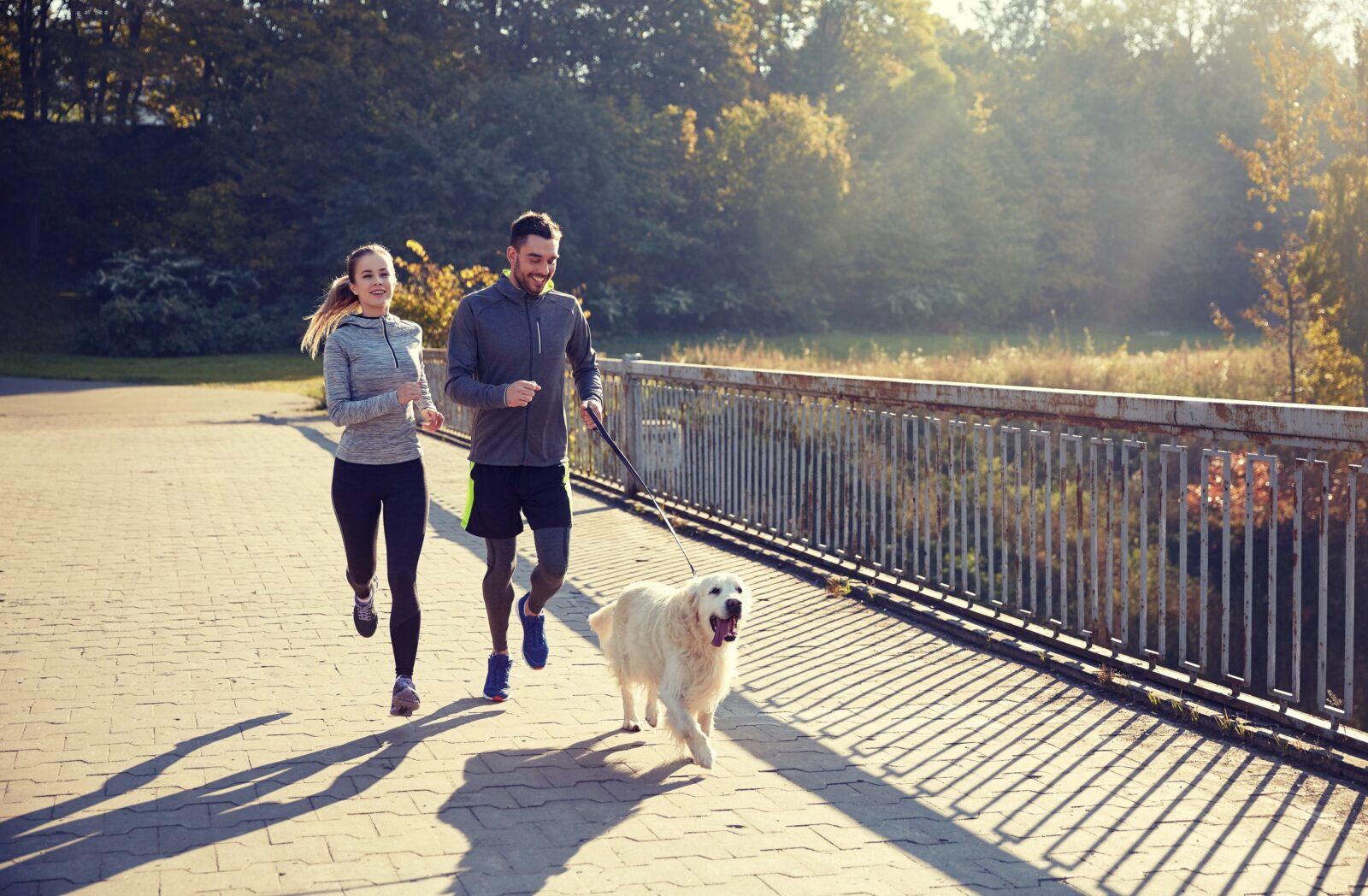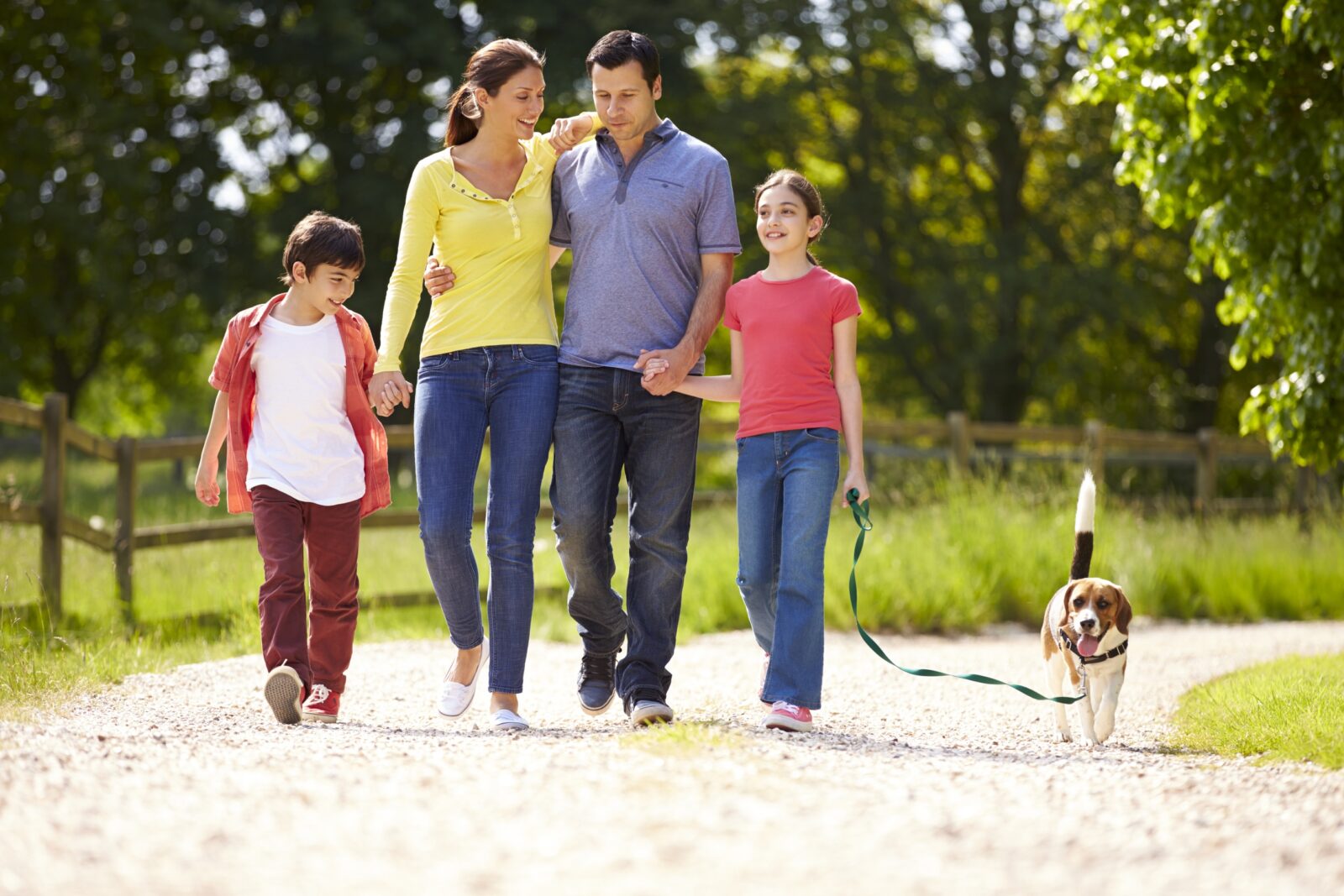Many people believe that when you say, “It’s time to walk the dog,” you mean that your pet has to go do his “business.” Yes, walking the dog is necessary for keeping the family carpet clean, but going for a walk with your dog has many additional advantages. In this article we will go over the benefits of dog exercise.
How can walking my dog keep him healthy?
Walking your dog is a simple action that benefits overall wellness, including:
Body Condition and Weight
Obesity is a serious health problem, but unless there are medical concerns, there is a simple solution: burn more calories than you consume. Regular activity, such as walking, is an excellent method to burn calories and lose excess weight for both your dog and you.
Health Care Collaboration
Another prevalent health issue is immobility. Joints, even aged ones, must function properly. People and dogs get stiff when inactive over an extended period, and keeping joints in motion enhances their function.

Urinary and Digestive Health
Walking helps to normalize your pet’s digestive tract. Taking your dog outside regularly reduces constipation. Also, because bladder infections are more frequent when pee remains in the bladder for lengthy periods, regular emptying keeps this portion of the anatomy happy as well.
Of course, before beginning an exercise regimen, you should speak with your doctor and veterinarian.
Doesn’t My Dog Get Enough Exercise Playing in the Backyard?
Walking has several advantages that go beyond physical health, including:
Mental well-being
Dogs dislike boredom, and if you offer them something useful to do, such as go for a walk, they may be less inclined to do anything harmful, such as chew the sofa. Walking exercises both the intellect and the body. Watching animals, discovering new trails, meeting other people and their pets, and so on provide your dog with mental stimulation that he cannot obtain in the same caged area all of the time. Walking also helps dogs sleep better at night by releasing extra energy.
Emotional well-being
You are your dog’s universe, and he demands your attention. Spending time on a walk with your pet gives him your undivided attention. The time alone will also strengthen your relationship and help avoid irritating, attention-seeking habits like excessive dog barking or whining.

Personal well-being
Many people require external encouragement to exercise and rely on an exercise companion to get them off the sofa. But, what happens if your workout buddy is late for work, delayed in traffic, or has another commitment? Your dog is only interested in one thing: you! As a result, he’s the ideal workout buddy. He is always accessible and eager to go on a stroll with you.
Dog Exercise and Walking Can Increase Your Health and Your Dogs
As you can see, frequent walking provides health advantages for both you and your dog, as well as aiding in the prevention of obesity, which is a significant issue in both species.
Almost 75% of Americans are overweight, and pediatric obesity is rising (close to 20 percent). However, adults who walked their dogs daily were less likely to be obese than their non-dog-owning neighbors in a 2008 research conducted in Seattle and Baltimore. Furthermore, walking for 30 minutes every day lowers the incidence of coronary heart disease, osteoporosis, colon and breast cancer, and type 2 diabetes.
Obesity in dogs is also a concern. Research shows that around 50% of dogs in the United States are overweight, with 25-30% obese. Obese dogs, on the other hand, do not live as long as slender canines. They also have more significant heart issues and joint difficulties, which lower the quality of life. Although your dog may get exercise from playing and running when left in a fenced yard, they, like humans, prefer to sit down in the shade rather than frolic, especially if there is no one to play with him. However, if given the opportunity, they will gladly accompany their owners for a stroll!

What distance should we walk?
Studies show children between the ages of 5 to17 should engage in at least 60 minutes of aerobic activity each day. Adults, ages 18 to 64, should get in 30 minutes of daily aerobic activity. In addition, adults should also have two days per week of strengthening activities. Seniors over the age of 65 should also engage in moderate activity five days per week, strengthening training two or more days per week, and flexibility and balance exercises at least three days per week.
Taking your dog for walks is an excellent way to get active. The benefits for you, your family, and your dog will be overall better health and a much happier pet!
So, where do we begin?
How to Establish a Dog Exercise Routine
Many individuals make it a point to exercise more in the new year. What can you do to stay on track with your resolution? Make an appropriate fitness regimen that does not overwhelm you, and include your best exercise companion in it. Making a sensible walking routine that does not overburden your body or overcrowd your hectic calendar can help you remain on track, and adding your dog will push you to get started.
Begin by taking a few 10-minute practice walks around the neighborhood. Increase the time and distance when you and your dog are ready. Set your goal to walk for 30 minutes every day; it doesn’t have to be all at once. For example, you may go for a 10-minute walk before work and a 20-minute walk when you get home. On weekends, you may change up the schedule by completing three 10-minute sessions. Strive for 30 minutes of daily exercise, regardless of your schedule.
One of the best ways to stay in the routine of walking is to change up your walking path and venture out to areas you have not gone before. The change of scenery will keep your walks interesting for you and your pet, providing exercise and visual stimulation. If you’re feeling energetic, try a game of fetch or a stroll across the park. The goal is to prioritize your exercise, making sure to have a set time each day. Walking on a schedule will help you stay on track with exercise and less likely to stray from your plan. As your dog becomes used to his new routine, he may even remind you when it’s time to go for a walk. His reminders are just one reason dogs make excellent workout buddies!

Keeping Track of Your Progress
Dog owners who want to measure their progress can do so by downloading a walking calendar or an exercise app or using one of the electronic tracking devices that record daily steps and caloric data (calories consumed vs. burned). Seeing the statistics can sometimes give extra encouragement to walk a little farther or confirm your efforts when you accomplish your goal.
Recognizing and rewarding your efforts
Some people prefer a reward for their training efforts, so they eat a cookie or have a cheat meal on a designated day. However, after a stroll with your dog, you may discover that his thankful, calorie-free attention is all the reward you require. And your dog will share your sentiments! A simple stroll is an excellent method to express your feelings for someone.
Last Steps in the Benefits of Dog Exercise
Dog exercise is not only important but so beneficial for your dog and you. However, we know life can get hectic, crazy, and schedules can be hard to manage at times. Latchkey Pets is the team to call if you’re looking for daytime dog walking services and vacation pet sitting services. Loving care when you’re not there is just a phone call away. Get in touch with Latchkey Pets today!
